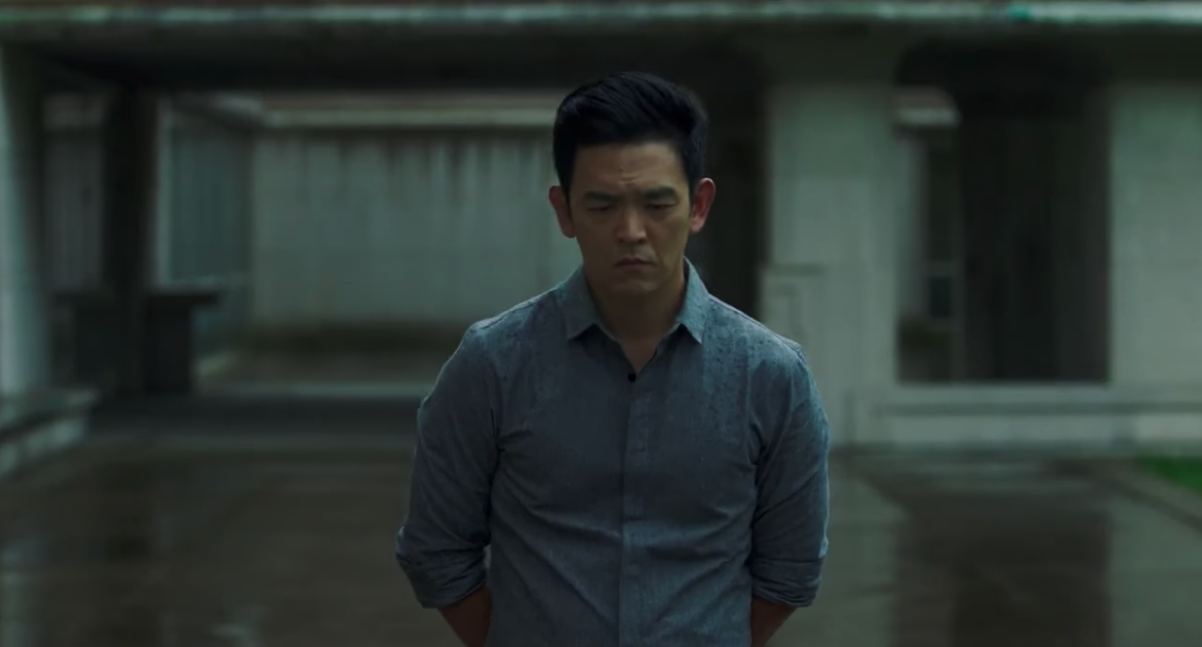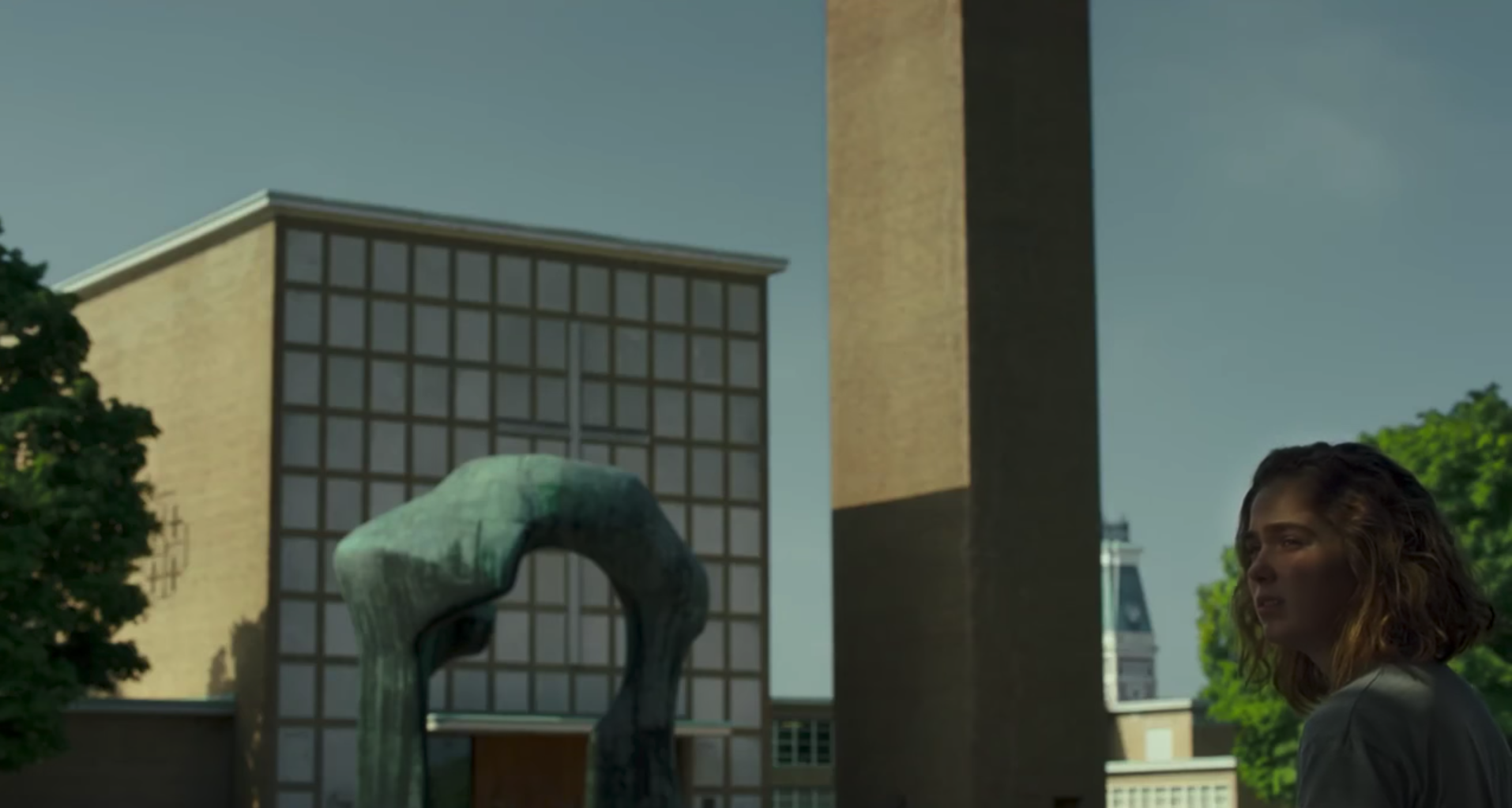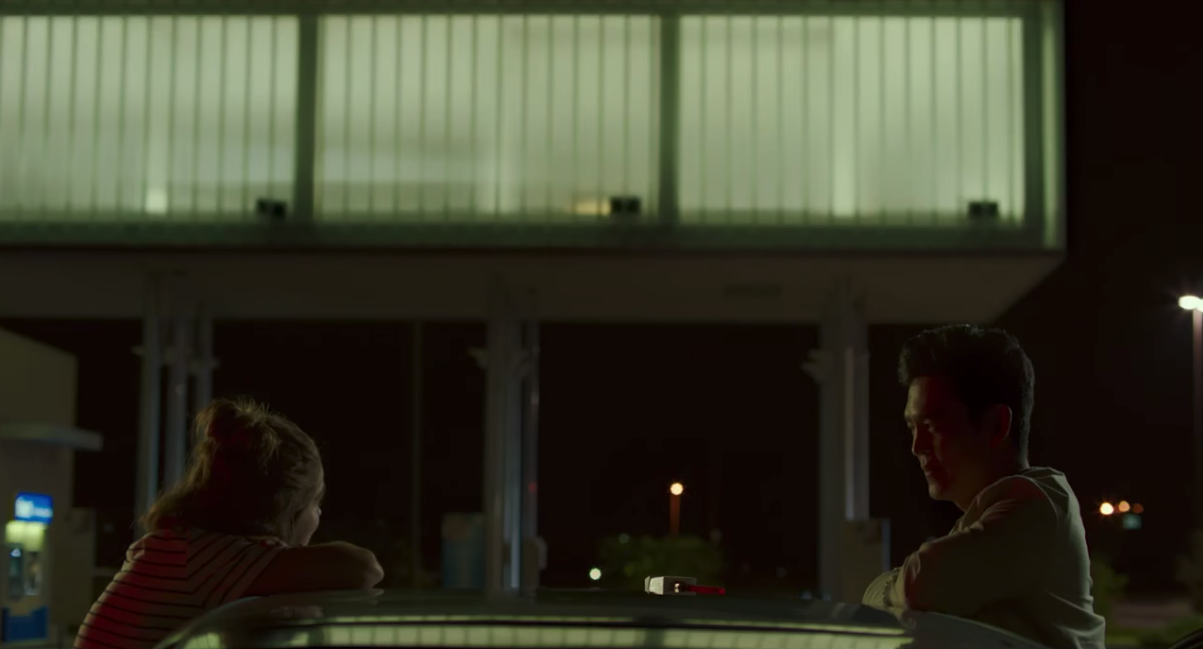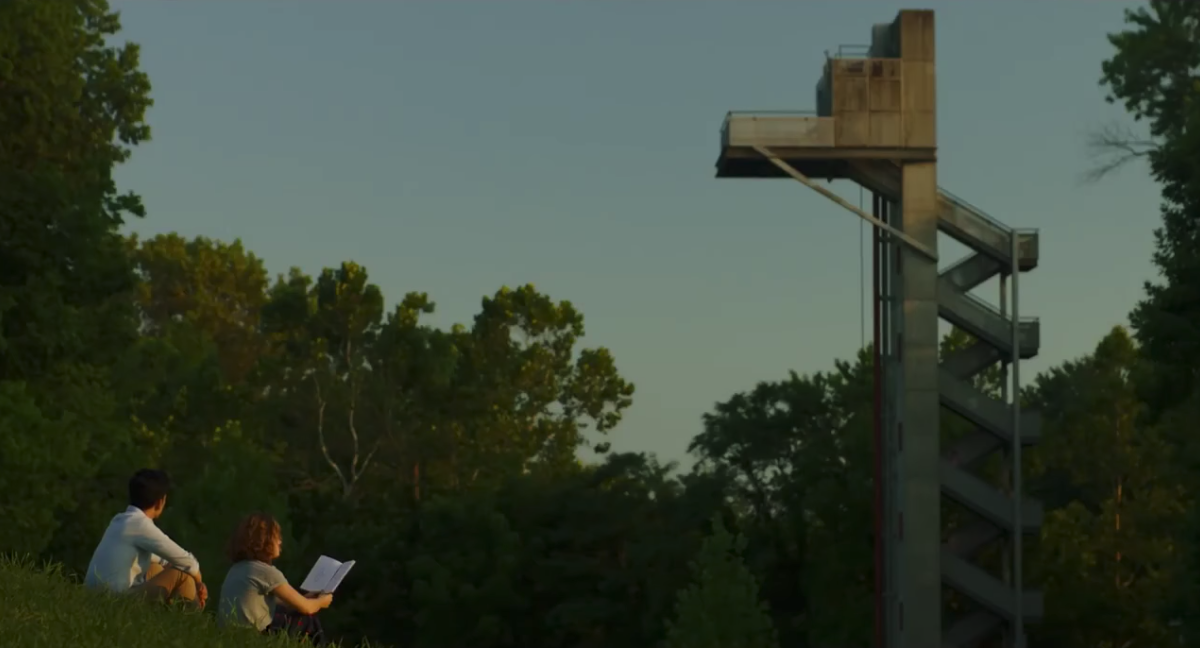Columbus: What happens when you meet your reflection?
Spoiler Alert: this post is about the film Columbus, and contains important plot points from it.
There is a famous black-and-white optical illusion called Rubin’s vase, where the subject changes from a white vase to the shadows of lovers when you choose to focus on the darkness. This phenomenon, called multistable perception, involves mutually exclusive perspectives that are unified in a single image. In Columbus, a place where people are seen in reflections and through mirrors, this duality can be seen in everything.
Columbus is a film written and directed by Kogonada, following Jin, a Korean man with a dying father, and Casey, a 19-year old who forewent college to take care of her mother.

Jin, played by John Cho, reluctantly arrives in Columbus upon news of his father’s admittance to the hospital. During his first few days, he wanders aimlessly, talking on the phone to his employer overseas. As he interacts with the people around him, we learn about the way he sees his father: distant, and loved by many.
He believes that his father does not need him, and draws away from him for those reasons.

Casey, played by Haley Lu Richardson, is a native to Columbus. When we first meet her, she recites facts about the surrounding architecture under her breath as she smokes. She practices a monologue about a building that is asymmetrical, but balanced- one that she repeats to Jin later on. Over time, we also learn about her relationship with her parent. She sees her mother as someone who is abandoned, loved only by her, and needs her. Casey decides not to go to college for these same reasons.

The lens is focused on architecture, and thus draws our attention to the environments that our characters are confined in. In Jin’s eyes, we find a stifling little town, filled with familiar sights. “You grow up around something and it feels like nothing”, he says. When he describes a psychiatric ward as “both a phyiscal bridge, and a metaphorical one”, we find that the description is his father’s, and he does not believe in his father’s idea of the healing ability of architecture. He sees it as grandiose and egocentric, as a delusion of architects.
Casey, on the other hand, recounts a memory where she discovered the beauty in her surroundings during a difficult time in her life. She has experienced the healing ability that Jin’s father speaks of, and expresses her love to her mother in the same way- through creating a caring environment for her.
Like water, they fill the space that they exist in. But while both of them are in Columbus, the shapes that they form are completely different. They are opposites- young and old, selfless and self-absorbed- meeting at a place and time where they are best able to learn from their differences.

At the beginning of their relationship, when Casey gives Jin a tour of the area, he has no interest in the architecture. Instead, he asks her to tell him what she cares about- rather than the facts that she has memorized. In watching her fascination of architecture- and through it, her great capacity to love- he learns that he has a choice to care in the same ways.
Through Jin, Casey is reminded that people make their own choices, even with the ease of a good environment. Independence is something that we all have, whether or not we choose it, and Jin acts as an example that she should make the best of her own. Casey would otherwise live a life with lingering regrets, and perhaps in the teeth of time, her ability to love would slowly be consumed. Jin explicitly reminds Casey that her mother wants what is best for her, and Casey eventually chooses to pursue a career in architecture.
A missed connection is a tragic thing- a fact that both Jin and Casey understand in different contexts. We all have our own differences and because of this, we have a lot that we can learn from one another. And so, the two push one another to examine themselves and share, and a beautiful intimacy grows between them, like the shape of a vase between two shadows.

During the course of the film, Jin searches for what he believes is a tower in his father’s diary. He tries to decipher the undescriptive scrawl of lines as he wanders the city, searching for a building that matches it.
Near the end of the film, as he shares a bag of pastries with Casey, he points at an empty space created by two brick walls. He’s unsure, but he believes that he has found the location that his father wrote about. It is not the tower that he expected, but instead, a space between two structures.
As he settles into an apartment in Columbus to take care of his father, Casey says her goodbyes before leaving to college. Two people, from different worlds- each a reflection of the other- converged, then passed through to the other side, leaving both lives a little fuller than they were before.
